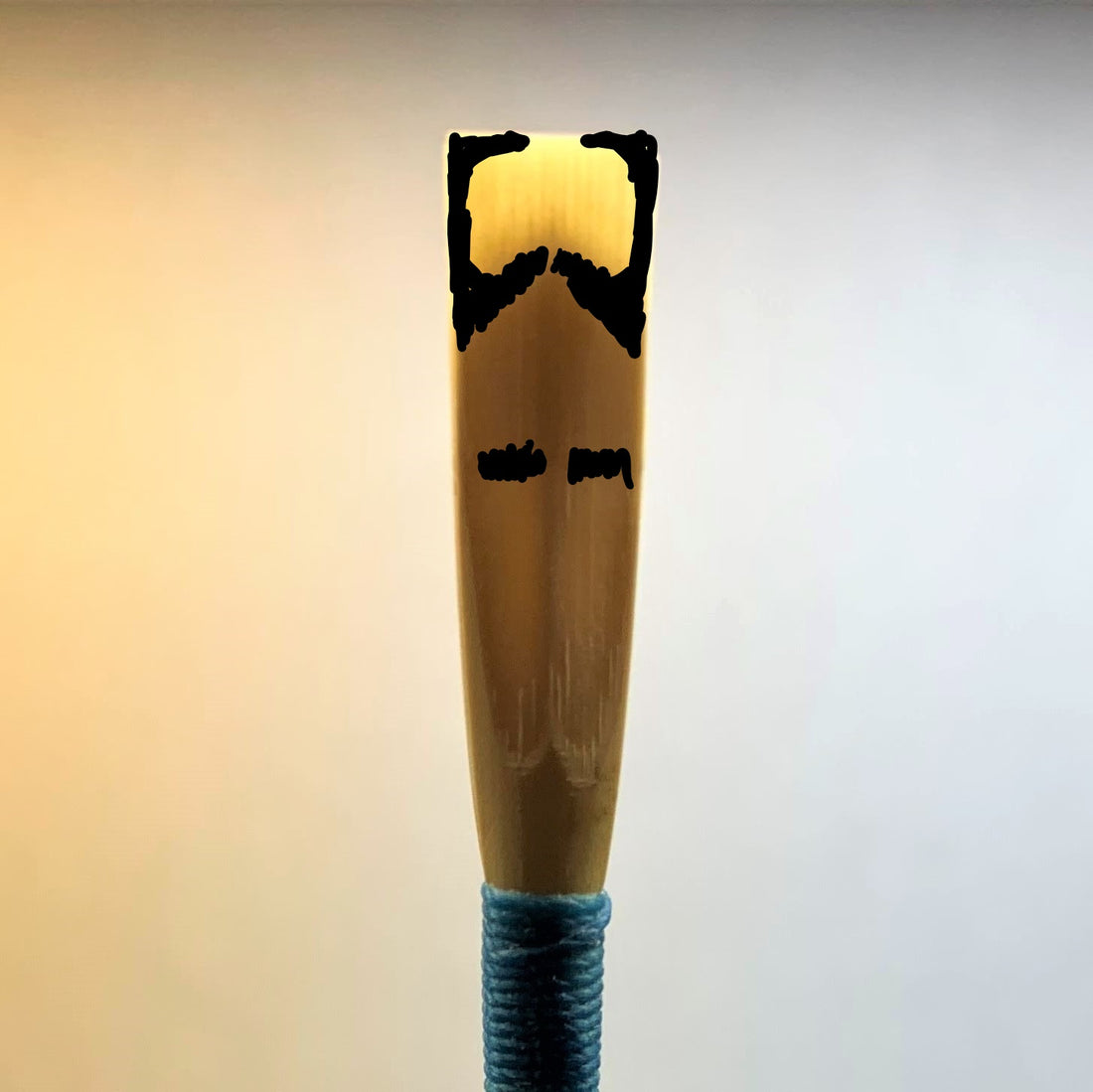IF you subscribe to Superior Oboe Reeds Newsletters, this is a longer, more detailed version of Newsletter #2.
Fixing Reeds
In my first newsletter I talked about the life of a reed: how long it lasts, what happens as it gets older, and when to replace it. This time I want to talk about how to make it last longer and how to keep it working well. You’ll need a couple pieces of equipment for some of this, but you can accomplish some of these fixes without equipment.
Reed-fixing equipment:
Reed Knife – A knife specifically meant for reed making and fixing.
Sharpening equipment for the knife - You’ll only make things worse if you use a less than sharp knife for fixing reeds.
Plaque – a thin piece of steel that is inserted between the blades of the reed as a work surface. I suggest the rounded tip plaques because they work better for cleaning the interior of the reed.
Cutting block – it’s important to cut on a real cutting block since the top of the block is contoured to prevent the reed cracking.
Optional useful equipment – fine sandpaper, plumber’s tape (Teflon tape) and undyed pipe cleaners.
Routine for long lasting reeds:
Soak reeds in water, not your mouth. Reeds will be more thoroughly soaked, and they won’t disintegrate as fast.
Rinse reeds in water after playing. Then eliminate as much water as you can before putting the reed away.
Store reeds in a ventilated reed case, not the box or tube they came in when you bought them.
Rotate reeds, don’t play on the same reed every time you play.
Use cork grease to prevent the cork from tearing when you insert or remove it from the oboe. You can sand the cork down a bit if the reed is too tight.
Never walk around with the reed in the oboe. It should be either in a reed case or your mouth.
There are things we can’t fix:
We can’t fix a dead reed. The cane just stops vibrating after about 20-25 hours of playing. It’s just dead. Have a little ceremony and move on.
We can’t fix a reed with a mangled tip or a cracked reed. That means cracks from the tip that extend through the tip into the heart of the reed. If the crack is just starting at the tip, you might get a bit more playing out of it, but there is nothing we can do to prevent the crack from expanding. Cracks that start from the string that don’t extend more than a few millimeters are not a problem, they are almost always stable and don’t affect the reed.
We can’t fix a new reed with visible gaps on the side. Gaps indicate warped or badly shaped cane. As a reed gets older gaps can also develop, which is a sign of advanced age. Small gaps really close to the tip indicate a missing corner and are less of a problem. In this case, the reed is playable, but not ideal.
We can’t fix a reed that is too weak at the rails (the extreme sides of the reed from the heart back to the string). The rails need to be substantial and stay strongly sealed, so the reed doesn’t leak air at the sides when you are playing. You can temporarily hold the reed together with a wire, but it changes the way a reed works and after a brief time even that won’t help.
We can’t fix a reed that is too thin or too short – you can’t put cane back on the reed. If a reed is just too thin, we can shorten it, but it’s not a quick fix, it’ll require some scraping and clipping.
If the reed is badly tied, there’s not much we can do. Common issues of this type include tying the string past the end of the staple (the metal tube), creating the wrong overlap, and a leak from the sides of the reed. Your reed might still work, but it won’t work well. There are fixes which might work listed below.
If too much of the corners of the tip are lost while scraping, the reed is going to lose response or stop working so take care to keep your knife razor sharp and use short concise strokes of the knife when scraping.
Easy reed fixes:
If a reed is new enough, thick enough and long enough and doesn’t have any defects from tying or scraping, there are things we can try to improve the reed’s pitch and response. Tone is not addressed here.
It’s easy to do too much when fixing a reed, so try only one fix at a time and test the reed frequently.
If your reed is leaking near the string, wrap and inch or so of Teflon tape around the reed. If that leak is in the heart or near the tip, this won’t work, but at the base of the reed it works fine. You could try putting a wire on the reed, but that will change the reed in several ways and might not solve the leak.
If the opening of the reed is too big and the reed is hard to control, first try correcting the overlap. Determine which way the blades of the reed want to overlap and, at the base of the reed blade, push the inside blade further to fix the overlap. If you listen, you might hear a click as the overlap settles into place. This process can also be used to increase the amount of overlap, effectively narrowing the reed which will make it more stable and slightly raise the pitch of the reed. Sand off a bit of the overlap to improve the response if needed. We can’t eliminate an overlap. The overlap is created when the reed is tied. Some people prefer reeds with no overlap. That type of reed can only be created when the reed is tied.
Another useful technique for a new reed that is too open is to soak the reed well and then collapse the blades together with your thumb and forefinger, holding them together and twisting slightly to “train” the reed to have a narrower opening and interior. If the cane isn’t soaked enough, you’re going to crack the reed, so be careful.
Once we’ve played a couple of sessions on a reed, there are a couple of spots that tend to swell more than the rest of the reed causing response issues. The picture above points out the areas that swell up. Scraping a layer from these spots with the reed knife should improve the reed’s response. If the reed is a bit buzzy after this, clipping the tip a hair’s width should fix it.
If a reed is getting older and the response has become sluggish, try to “clean” the reed. Scrape the whole reed surface with the reed knife or the edge of a plaque. A sharp kitchen knife or fingernail would work, too. To clean the interior of the reed, run hot water through it and then carefully use the edge of the plaque inserted into the tip of the reed to scrape the gunk out. Or, you can pull a pipe cleaner through from the bottom of the reed and out the tip. Soaking the reed in hot water will also temporarily open the reed.
If the reed is slightly sharp, take a layer of cane off the heart of the reed. Take care that you take the same amount off all over the heart to preserve symmetry.
If the reed is flat, first lengthen the windows of the reed about a millimeter toward the winding. If it’s still flat, take a layer of cane off the corners of the tip and then clip the reed a hair’s width or two.
To improve response, also check the sides of the tip. This area of the tip should be thinner than the middle of the tip and the corners of the tip should be thinnest. Response problems can also be caused by a high spot anywhere on the heart or too steep or too gradual blending from the heart to the tip. The best way to tell is to look at reeds that respond well and compare the blending.
Check the reed for symmetry. Asymmetry can cause response problems because the reed cannot vibrate correctly. Scraping the reed to make it more symmetrical might improve the reed. But I’ve seen commercial reeds that are far from symmetrical. Use your judgement. If it’s extremely asymmetrical, you are likely to ruin the reed by trying to make it symmetrical.
Remember, the two most crucial factors about a reed are that it responds easily, and it plays in tune. Playing a reed that has a gorgeous sound is nice, but this quality is third in importance to response and pitch.

